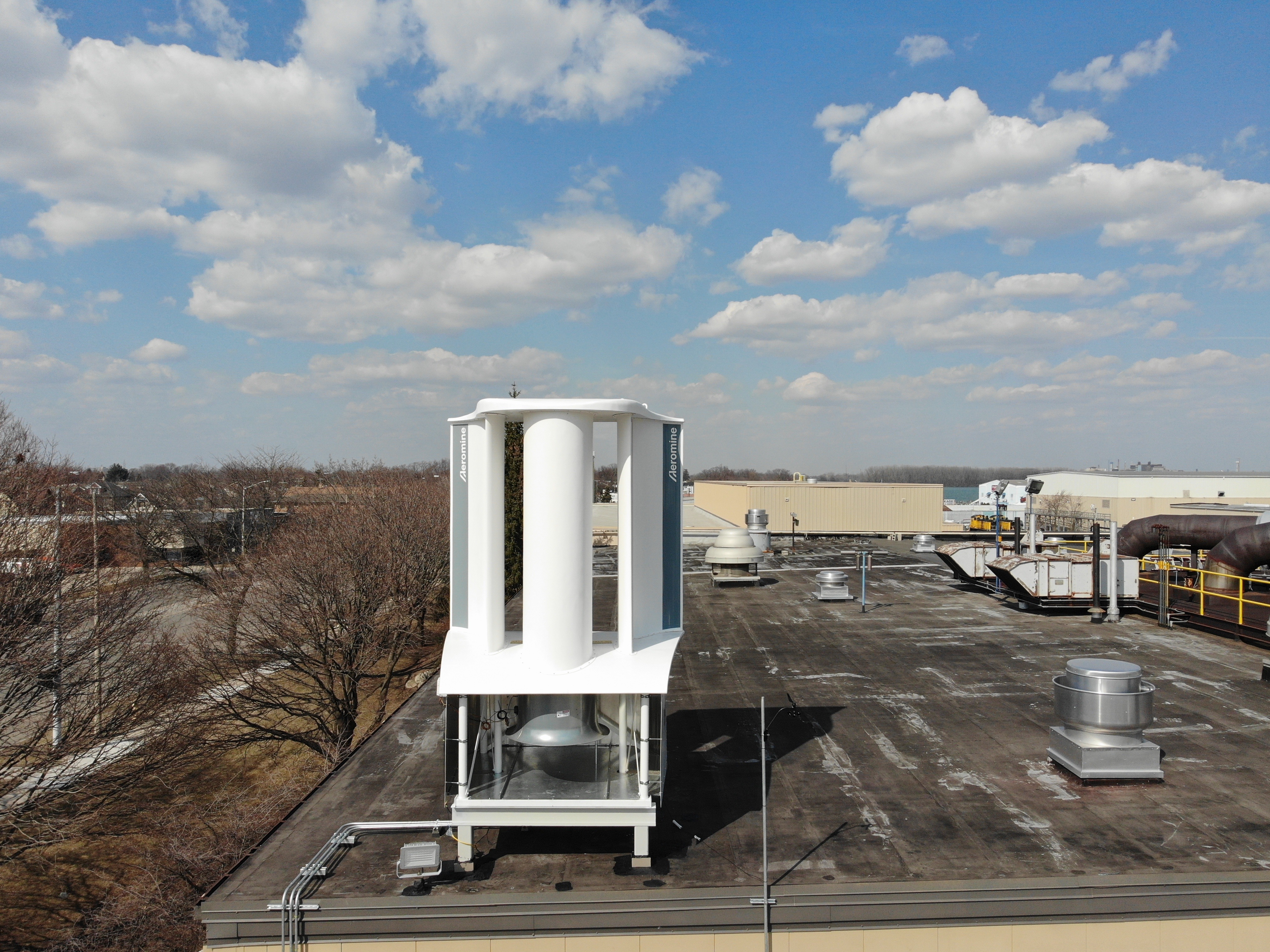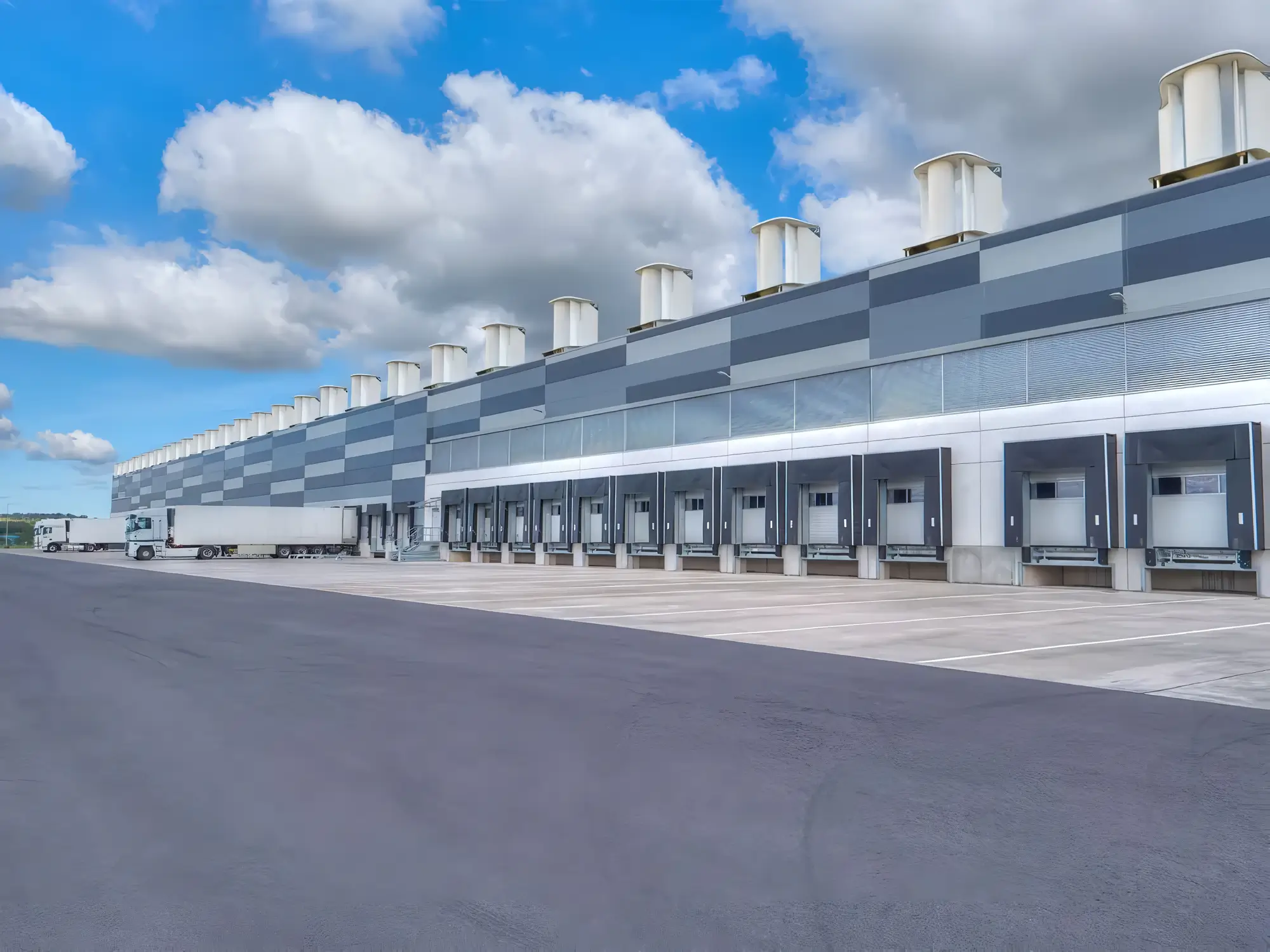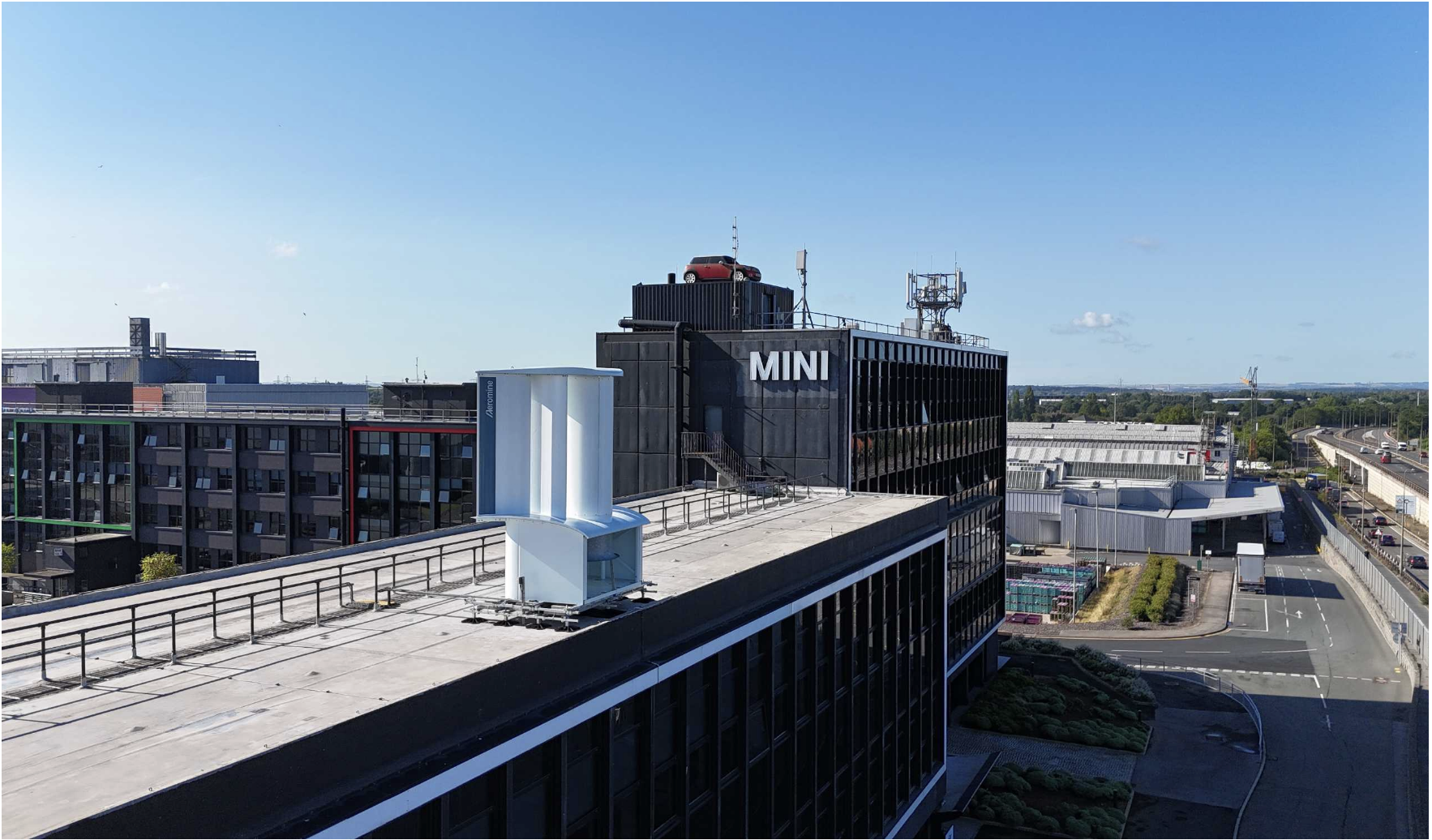Aviation Analysis by Gernot Kramber
October 23, 2022
A box was developed in Texas that captures the wind, amplifies it and then generates electricity inside. Without noise and without spoiling the scene. One box has a capacity of 5000 watts and supplies electricity even at night and in the dark season.
Until now, anyone who wanted to generate their own electricity at home had to rely on solar energy. Building your own small wind power plant is subject to strict requirements once the equipment exceeds the size of a better game. This is partly due to emissions from the devices – operating noise and the stroboscopic effect of leaves in sunlight. Aeromine Technologies, a division of the University of Houston, has now introduced a new generation of wind turbines that remain completely motionless and silent in the landscape or on the roof.
The system should also be much cheaper than the solar system. “Aeromine Technologies’ patented immobilizer wind power system produces up to 50 percent more energy for the same cost as a rooftop solar array,” the company said.
Looking at her from the outside, motionless
How does the device work? In fact, the plant only moves when viewed from the outside. There you see only one type of wind trap. Its shape captures the wind and directs it to the actual turbine inside. Then, of course, something is moving there. The turbine is oriented vertically and rotates inside the device to generate electricity. The height of the entire box is three to four meters. Previous test systems stood on a kind of base, on which the supply lines were supposed to work. Properly installed, it can be ceiling or underground.
Small wind power plants are nothing new. When it comes to miniature versions of large systems, they are difficult to set up in residential areas. There are also smaller vertical turbines. The special thing about the Aeromine is the aerodynamic windbreak, which increases efficiency. It amplifies the gentle breeze in a heavy breeze and improves wind flow, even if it does not hit the device directly. The catcher has a larger surface area than the turbine hole. Basically, these catchers are based on the well-known Venturi effect, by cleverly narrowing the airflow, the flow rate is increased.
Flat high ceilings are preferred
The devices are initially intended for commercial premises. 20 to 40 pieces can be placed on the surface. Winds usually blow stronger at the surface and are not deflected by altitudes on the ground. Boxes require much less space than solar panels. One box is supposed to generate 5,000 watts – this corresponds to about 12 solar panels of 400 watts each, which collectively require about 50 square meters of space. Of course, rooftop wind boxes can also be combined with solar panels. This is also different from windmill-like devices, whose rotors will shade adjacent solar panels.
In principle, such devices can only be set up in places where there is no wind. It is also important to have a constant wind direction, since at the moment the boxes cannot be turned into the wind. This would be easy to do as it would only require the plastic catcher to rotate around the turbine. However, due to the reinforcement effect, there should not be a storm.
24/7 electricity supply
The advantage of such a system is obvious: as long as the wind is blowing, it delivers electricity around the clock, all year round. The longer run times also explain the cost advantage over the PV system. The annual watt-hour harvest of a 5000 watt box is much higher than that of panels of the same capacity.
Since the boxes are completely inconspicuous and do not pose any risks such as bird strikes, they can also be a useful addition to private households – provided they are in an appropriate location. The device will not work in a small garden surrounded on all sides by hedges and buildings. Completely different but in the open countryside near the coast.


